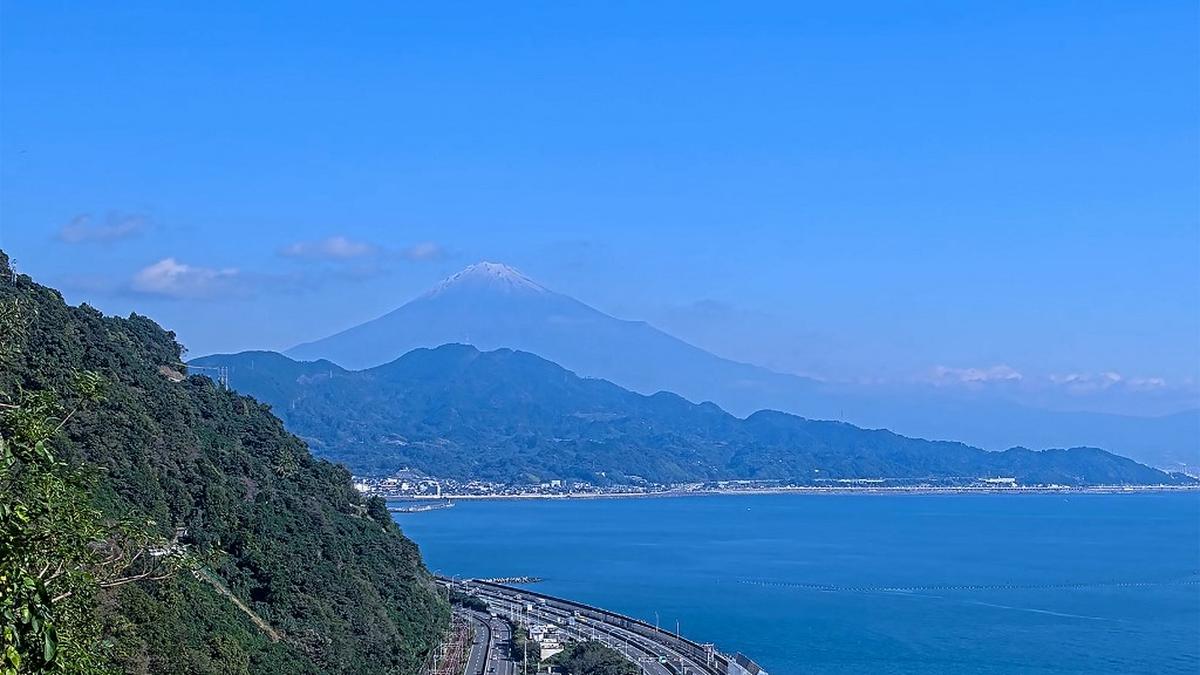
This screen grab, taken from a live video stream broadcast by the Shizuoka City government on November 6, 2024, shows Mount Fuji (rear L) with a dusting of snow on its summit, seen from the Shizuoka City side of the mountain. , Photo credit: Handout by Shizuoka City Government via AFP
After setting a record for the most delayed snowfall in 130 years, Japan’s Mount Fuji finally got its trademark snowcap on Wednesday (Nov. 6, 2024), more than a month later than it normally would.
The first snowfall on Mount Fuji, a United Nations Educational, Scientific and Cultural Organization (UNESCO) World Heritage Site, can be seen from the southwestern part of the mountain on Wednesday (November 6, 2024) morning, according to the Shizuoka branch. Japan Meteorological Agency (JMA).
But the JMA’s Kofu Local Meteorological Office, which is on the other side of the mountain and has been in charge of making the announcement since 1984, still couldn’t see the snow because of cloud cover – meaning it’s not yet official.
“The lack of snow on UNESCO World Heritage site Mount Fuji by Tuesday (November 5, 2024) has broken the previous record set on October 26, 2016,” meteorological department officials said.
Typically, snow begins to fall on the 3,776-metre (about 12,300 ft) high mountain’s summit from October 2, about a month after the summer hiking season ends. According to JMA, snow had fallen on the mountain on October 5 last year.
Snowless Mount Fuji has attracted attention on social media. People posted photos showing bare mountains, with some expressing surprise and others expressing concern over climate change.
The JMA’s Kofu office attributed this to October’s surprisingly summery weather. Temperatures have been high across Japan, including Mount Fuji, earlier this year.
“Many people are waiting to see the snowfall and we have received many inquiries recently,” Kiryu said. He said clouds around the mountain peak have blocked the view since Wednesday morning (November 6, 2024), delaying confirmation of snowfall, but officials are trying to get the peak in time for the first snowfall. .
Kiryu said it was too early to link this year’s late snowfall to global warming, noting that the first snowfall at Mount Fuji last year occurred in early October, adding: “I think we need to look at long-term data to reach any conclusions.” Data needs to be checked. “The average October temperature at the summit is minus 2 Celsius (28.4 Fahrenheit), but this year, it was 1.6 Celsius (34.9 Fahrenheit), a record high since 1932.
Japan also had an unusually hot summer and warm autumn this year.
The mountain “Fujisan”, a symbol of Japan, used to be a pilgrimage site. The mountain, with its snowy peak and nearly symmetrical slopes, has been the subject of many forms of art, including Japanese Ukiyo artist Katsushika Hokusai’s Thirty-Six Views of Mount Fuji.
Today, it attracts hikers who climb to the summit to watch the sunrise. But the tons of trash left behind and overcrowding have caused concern and calls for measures to protect the environment and control overtourism.
published – November 06, 2024 12:49 PM IST
